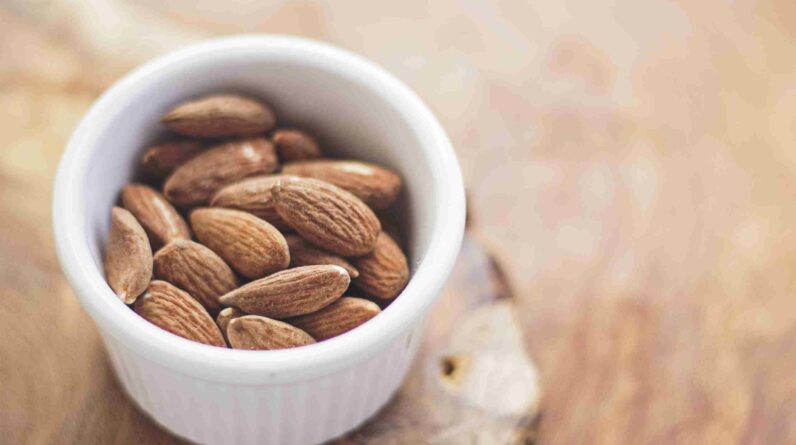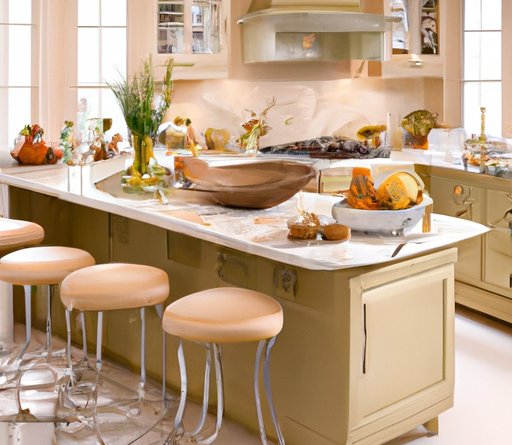When it comes to our kitchen utensils and cookware, we all want to ensure that we are using the safest materials. After all, the food we prepare and serve to our loved ones should be cooked and stored in utensils that are not only practical, but also free from any harmful substances. In this article, we will explore the different materials that are considered the safest options for kitchen utensils and cookware, helping you make informed choices for a healthy and happy kitchen.

Types of Kitchen Utensils
When it comes to equipping our kitchen, choosing the right utensils is essential for efficient and safe cooking. There are various types of kitchen utensils available in the market, each with its own unique features and benefits. Let’s explore some of the most common types of kitchen utensils that you can consider adding to your culinary arsenal.
Wooden Utensils
Wooden utensils have been used in kitchens for centuries, and for good reason. They are versatile, durable, and gentle on cookware. Wooden utensils are typically made from sturdy hardwoods like beech, olive wood, or bamboo. One of the greatest advantages of wooden utensils is that they are natural, non-toxic, and non-reactive, making them safe to use with all types of cookware, including non-stick surfaces.
Silicone Utensils
Silicone utensils have gained popularity in recent years due to their heat resistance and versatility. Made from a flexible, non-toxic silicone material, these utensils are durable and gentle on cookware. Silicone utensils can withstand high temperatures without melting or warping, making them perfect for tasks such as stirring hot sauces or flipping pancakes. Additionally, they are dishwasher-safe and easy to clean.
Stainless Steel Utensils
Stainless steel utensils are a staple in many professional kitchens due to their durability and versatility. They are made from a corrosion-resistant alloy of iron, carbon, and other elements, providing excellent strength and heat resistance. Stainless steel utensils are known for their sleek appearance, and they are resistant to stains, odors, and flavors. They are a great choice for tasks that require precision, such as whisking or measuring ingredients.
Plastic Utensils
Plastic utensils are lightweight, affordable, and readily available in various colors and designs. They are typically made from food-grade plastics such as polypropylene or nylon. Plastic utensils are ideal for everyday use, and they are safe to use with non-stick cookware. However, it is important to note that low-quality plastic utensils may be prone to melting or leaching harmful chemicals when exposed to high heat, so it’s essential to choose BPA-free and heat-resistant options.
Nylon Utensils
Nylon utensils are another popular choice for their affordability and versatility. They are lightweight, flexible, and gentle on cookware, making them suitable for non-stick surfaces. Nylon utensils can withstand high temperatures without melting or scratching the cookware, making them a safe and practical option for everyday cooking tasks. Additionally, they are easy to clean and dishwasher-safe.
Bamboo Utensils
Bamboo utensils have gained popularity in recent years due to their sustainability and natural beauty. Bamboo is a fast-growing, renewable resource, making it an eco-friendly choice for kitchen utensils. Bamboo utensils are lightweight, durable, and resistant to stains and odors. They are gentle on cookware and safe to use with non-stick surfaces. However, it’s important to note that bamboo utensils may require more delicate handling and regular oiling to maintain their quality.
Copper Utensils
Copper utensils have long been revered for their excellent heat conductivity and aesthetic appeal. Copper reacts quickly to heat changes, allowing for precise temperature control. However, copper utensils are often lined with other materials, such as stainless steel, to prevent copper from leaching into food. It’s important to choose copper utensils that are lined with food-safe materials to ensure the safety of your cooking.
Cast Iron Utensils
Cast iron utensils, known for their exceptional heat retention properties, have been used in kitchens for centuries. They are incredibly durable and versatile, suitable for both stovetop and oven cooking. Cast iron utensils require seasoning to develop a non-stick surface and to prevent rusting. When properly cared for and maintained, cast iron utensils can last a lifetime and even be passed down through generations.
Glass Utensils
Glass utensils, such as measuring cups and baking dishes, are essential tools in any kitchen. Glass is non-reactive and non-toxic, making it a safe and hygienic material for food preparation. Glass utensils are transparent, allowing for easy monitoring of cooking processes. They are also microwave and oven-safe, making them perfect for both cooking and serving.
Ceramic Utensils
Ceramic utensils, like ceramic knives or bowls, are known for their aesthetic appeal and versatility. They come in various shapes, sizes, and colors, adding a touch of creativity to your kitchen. Ceramic utensils are typically made from clay and fired at high temperatures, resulting in a durable and non-reactive material. They are easy to clean, and their smooth surfaces make them resistant to staining and absorbing odors.
Types of Cookware
Choosing the right cookware is equally important for safe and efficient cooking. From stainless steel to cast iron, each type of cookware offers unique properties that can enhance your cooking experience. Let’s explore some of the most common types of cookware available and their benefits.
Stainless Steel Cookware
Stainless steel cookware is a popular choice for its durability and versatility. It consists of a multi-layered construction, usually with an aluminum or copper core sandwiched between stainless steel layers. This design ensures even heat distribution and prevents hot spots. Stainless steel cookware is resistant to rust, corrosion, and staining. It is compatible with all cooktops, including induction, and can withstand high oven temperatures.
Cast Iron Cookware
Cast iron cookware is beloved for its superior heat retention and even heat distribution. It is made by pouring molten iron into a mold, resulting in a remarkably durable and long-lasting cooking surface. Cast iron cookware requires seasoning to develop a natural non-stick surface and prevent rusting. It is ideal for slow cooking, frying, and baking. With proper care, cast iron cookware can be handed down through generations.
Copper Cookware
Copper cookware is known for its exceptional heat conductivity and precise temperature control. It quickly responds to heat changes, allowing for precise cooking techniques. Copper cookware is often lined with stainless steel or tin to prevent copper from interacting with acidic foods. It is prized by professional chefs for its unmatched performance and elegant appearance.
Non-Stick Cookware
Non-stick cookware is coated with a layer of polytetrafluoroethylene (PTFE) or ceramic coating to prevent food from sticking to the surface. It is a popular choice for low-fat cooking and easy cleanup. Non-stick cookware requires less oil or butter to cook, making it a healthier option for some recipes. However, it’s essential to choose high-quality non-stick cookware to avoid potential health risks from the release of toxic fumes at high temperatures.
Aluminum Cookware
Aluminum cookware is lightweight, affordable, and an excellent heat conductor. However, bare aluminum can react with certain foods, leading to a metallic taste and potentially leaching into the food. To mitigate this, most aluminum cookware is now anodized or coated with a non-reactive material. Anodized aluminum has a hardened surface that is resistant to scratching and corrosion, making it a safer option for cooking.
Glass Cookware
Glass cookware is ideal for oven-baking and microwave cooking. It is a non-reactive material that does not absorb odors, flavors, or stains. Glass cookware is transparent, allowing you to monitor the cooking process. It is easy to clean and suitable for a wide range of dishes, from casseroles to desserts. However, glass cookware may not distribute heat as evenly as other materials, so it’s important to adjust cooking times and temperatures accordingly.
Ceramic Cookware
Ceramic cookware, with its vibrant colors and decorative patterns, is a delight to use in the kitchen. It is made from clay fired at high temperatures, resulting in a non-reactive and durable material. Ceramic cookware distributes heat evenly and retains heat well. It is versatile and suitable for various cooking methods, including stovetop, oven, and microwave. Ceramic cookware requires careful handling and can chip or crack if not properly cared for.
Clay Cookware
Clay cookware has been used for centuries in traditional cooking. It is made from natural clay, which provides gentle and even heat distribution. Clay cookware is excellent for slow cooking and retaining moisture in dishes. It is important to note that clay cookware requires special care, including soaking before use and gradual temperature changes, to prevent cracking. Additionally, it is not dishwasher-safe.
Carbon Steel Cookware
Carbon steel cookware is gaining popularity for its durability, excellent heat retention, and naturally non-stick surface. It is similar to cast iron but is lighter and more responsive to temperature changes. Carbon steel cookware requires seasoning to develop a non-stick coating and prevent rust. It is versatile and suitable for various cooking techniques, including frying, stir-frying, and sautéing.
Enamel Cookware
Enamel cookware is made by coating cast iron or steel with a layer of enamel, providing a smooth and non-reactive cooking surface. It combines the benefits of both materials, retaining heat like cast iron and being easy to clean like enamel. Enamel cookware comes in a variety of colors and patterns, adding a touch of style to your kitchen. However, it is important to handle enamel cookware with care, avoiding dropping or banging it, as the enamel coating can chip.
Factors to Consider When Choosing Safe Utensils and Cookware
While understanding the different types of kitchen utensils and cookware is important, it’s also essential to consider several factors when choosing safe and reliable options for your kitchen.
Safety Certifications and Labels
When selecting utensils and cookware, look for safety certifications and labels that indicate conformity with specific health and safety standards. For example, utensils and cookware that are certified as BPA-free or have passed food-grade standards ensure they are free from harmful chemicals and are safe for food contact.
Material Composition
Knowing the material composition of utensils and cookware is crucial for understanding their safety. Some materials, like stainless steel and silicone, are known to be safe and non-reactive. On the other hand, materials such as copper or bare aluminum may interact with certain foods, potentially leading to health concerns. Opting for non-reactive and food-safe materials is essential to avoid any adverse reactions.
Non-Toxic Coatings
If considering non-stick cookware, be aware of the coating used. Traditional non-stick coatings (PTFE) have raised concerns about potential health risks when exposed to high heat. Ceramic or porcelain coatings are considered a safer alternative, but it’s important to choose high-quality coatings that do not contain harmful chemicals.
Heat Resistance
Consider the heat resistance of utensils and cookware to ensure their safe use in different cooking methods and temperatures. Utensils and cookware that can withstand high heat without warping or releasing harmful substances are essential for safe and efficient cooking.
Durability
Investing in durable utensils and cookware is a wise decision for both safety and longevity. High-quality materials and solid construction ensure that utensils and cookware will not break, bend, or chip easily during use. Durable utensils and cookware are not only safer but also provide great value for money in the long run.
Maintenance and Cleaning
Consider the maintenance and cleaning requirements of utensils and cookware before making a purchase. Some materials may require special care, such as handwashing or seasoning, to maintain their quality and safety. Choosing utensils and cookware that are easy to clean and maintain will make your cooking experience more enjoyable.
Usage Considerations
Think about your specific cooking needs and habits when choosing utensils and cookware. Are you an avid cook who needs durable utensils for heavy use? Do you require cookware that is compatible with certain types of stovetops or ovens? Understanding your specific requirements will help you select utensils and cookware that best fit your needs and ensure safe and enjoyable cooking experiences.
Brand Reputation
Consider the reputation of the brand when purchasing utensils and cookware. Established and reputable brands often have rigorous quality control measures, ensuring that their products meet safety standards. Reading reviews and seeking recommendations can also provide valuable insights into the quality and safety of different brands.
Budget
While safety should be a top priority, it’s important to consider your budget when selecting utensils and cookware. There are options available in various price ranges, so finding safe and reliable choices that fit your budget is achievable with a little research and comparison.
Environmental Impact
Lastly, consider the environmental impact of your utensils and cookware choices. Opting for materials that are sustainable, renewable, or recyclable can help reduce your carbon footprint. Choosing long-lasting utensils and cookware also reduces waste in the long run.
By considering these factors, you can make informed choices when selecting safe utensils and cookware that will enhance your cooking experience and contribute to a healthier kitchen environment.
Wooden Utensils
Wooden utensils have stood the test of time as a popular choice in kitchens worldwide. They offer several benefits that make them a versatile and safe option for cooking.
Benefits of Wooden Utensils
Wooden utensils are gentle on cookware, as they do not scratch or damage non-stick coatings. This makes them an excellent choice for delicate surfaces. They also have excellent heat resistance, making them suitable for stirring hot dishes or flipping pancakes. Wooden utensils are non-reactive and non-toxic, meaning they do not leach harmful substances into food, ensuring safe and healthy cooking.
Considerations for Safe Use
While wooden utensils are generally safe, there are a few considerations for their safe use. It’s important to avoid exposing them to excessive heat, as this can cause warping or drying out the wood. They are also susceptible to absorbing flavors and odors, so it’s essential to wash them thoroughly after each use and avoid using them for strong-smelling foods. Additionally, wooden utensils require regular oiling with food-safe oils to maintain their quality and prevent cracking.
Maintenance and Care
To maintain the quality and longevity of wooden utensils, proper maintenance and care are essential. After each use, wash them with mild soap and warm water, ensuring thorough cleaning. Avoid soaking them in water or putting them in the dishwasher, as this can lead to warping or splitting. To prevent the wood from drying out, periodically apply food-grade mineral oil or a beeswax-based conditioner. This will keep the utensils smooth and well-protected.

Silicone Utensils
Silicone utensils have gained popularity in recent years for their heat resistance and versatility. Let’s explore the benefits and considerations of using silicone utensils in your kitchen.
Benefits of Silicone Utensils
One of the main advantages of silicone utensils is their exceptional heat resistance. They can withstand high temperatures without melting or warping, making them suitable for various cooking tasks. Silicone utensils are non-reactive, non-toxic, and non-stick, making them safe to use with all types of cookware, including non-stick surfaces. They are also easy to clean and dishwasher-safe, saving you time and effort in the kitchen.
Considerations for Safe Use
While silicone utensils are generally safe, there are a few considerations for their safe use. It’s important to avoid exposing them directly to open flame or intense heat sources, as prolonged exposure to high heat can damage the utensils. Additionally, avoid using sharp utensils, such as knives, on silicone surfaces, as they can cause cuts or damage. It’s also advisable to inspect the utensils regularly for signs of wear or damage and replace them if necessary for continued safe use.
Cleaning and Maintenance
Cleaning silicone utensils is a breeze. They are typically dishwasher-safe, but handwashing is equally efficient. Use mild soap and warm water to wash them thoroughly, ensuring that no food residue remains. Silicone utensils can also be sterilized by boiling them in water for a few minutes. To maintain the quality and longevity of silicone utensils, avoid using abrasive scrubbers or harsh cleaning agents that can damage the silicone surface. Proper storage, such as hanging or placing in utensil holders, will help prevent deformation or damage.










